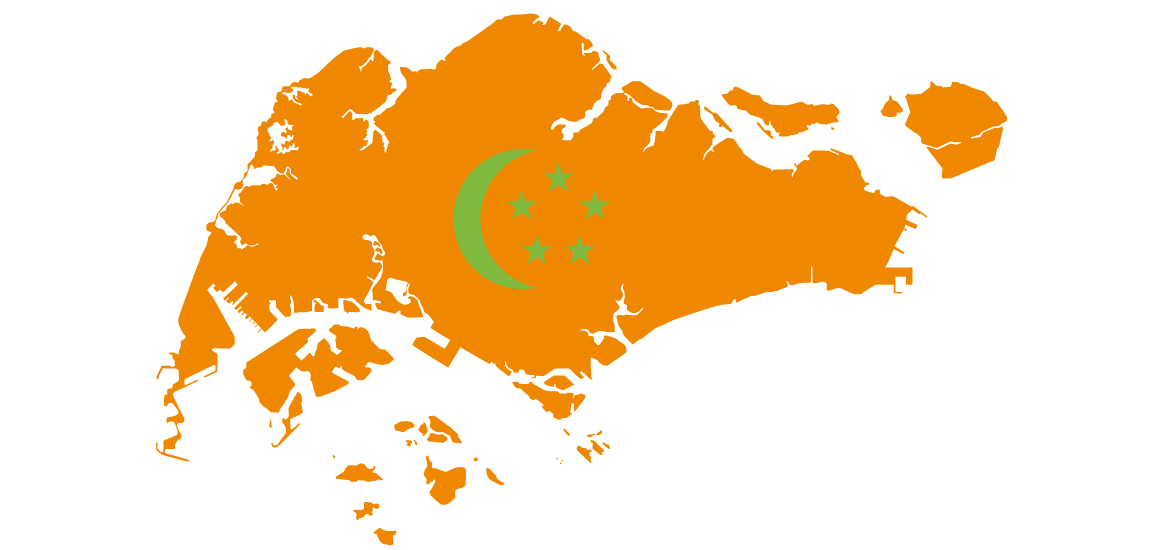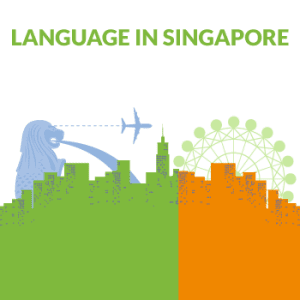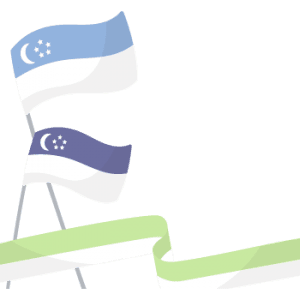
Do you Know What Language is Spoken in Singapore?
10 Jun Do you Know What Language is Spoken in Singapore?
Singapore
Singapore is an island in Southeast Asia located at the southern tip of the Malay Peninsula. A small country with about 5 million people and 63 islands, Singapore has four official languages: English, Malay, Mandarin Chinese, and Tamil. A complete 23% of the population speaks Mandarin as their first language, while 2% speak Tamil and 3% speak Malay. This leaves 72% of the people that only speaks English as their first language, while another 12% speak it as their second language.
For those who are traveling to Singapore, you must know the language that is spoken in the country. Many languages are being spoken in Singapore, and you must know what language is being spoken to avoid any possible conflicts.
A travel ban is a restriction placed on a person’s ability to leave one country and enter another. This can be for health reasons, security reasons, or other reasons. Travel bans are often used when someone has been arrested for a crime but has not yet been convicted. They are also sometimes used to prevent people from getting arrested in another country.
Malay
More than 75% of Singaporeans are ethnically Chinese. Of that population, two-thirds speak Mandarin and other varieties of Chinese (like Hokkien) at home. But Malay is still widely used by older generations in homes, on TV and radio broadcasts, and especially within Muslim communities. Before the arrival of the British colonizers in 1819, this was an indigenous language spoken in Singapore.
It’s also one of the country’s national languages. All Malaysians have a constitutional right to speak and study it in schools. Malay is the official language of Singapore, and it’s known as Bahasa Melayu. It’s also an official or working common language of Brunei, Indonesia, Malaysia, and Thailand.
Although most speak a dialect of Malay, other languages are native to certain areas. For example, Tamil and Teochew are both native to Singapore. Malay is also a part of a larger group called Austronesian languages—which includes Tagalog/Filipino, Hawaiian, Maori/New Zealanders’ native tongue, Hawaiian/Samoan, Tahitian/Cook Islanders’, Fijian/Tongan…and more!
There are about 1 billion people who speak these languages worldwide. So if you’re planning to visit Singapore or any of those countries, it might be helpful to learn some Malay words before your trip! Make sure you know about the travel bans.

Tamil
When colonized by Britain, English was imposed on its subjects. As a result, more than three dozen other languages are spoken in Singapore, according to Ethnologue. One of them is Tamil, a Dravidian language with about 70 million speakers worldwide. It is recognized as the official language of Singapore. Its written form looks like Arabic or Sanskrit. Also known as Singaporean Tamil or Singlish (its dialect), it can be found in government and legal documents, literature, and entertainment.
The Tamil taught in schools is a purposefully pure version that does not reflect or promote Tamil as spoken in everyday life. It’s also used in religious ceremonies and temples. The first Indian immigrants brought their native tongue when they arrived between 1819 and 1907. Today, it’s estimated that nearly half of all Singaporeans speak Tamil at home. There are two types: colloquial and literary, used for writing songs, poetry, and books such as The Ramayana—one of India’s most significant works from ancient times.
Mandarin
You might think that English or Malay is the most popular, but Mandarin is Singapore’s most common second language. Mandarin was the predominant language by 40.2 percent in 2020, down from 47.7% a decade before. It’s taught in all of Singapore’s schools, and Singaporeans learn it is beginning at age 7 for one to two hours a week. Chinese culture plays a vital role in local life: More than one-fifth of residents are ethnic Chinese, and Mandarin has become something of a lingua franca. Many locals can speak three languages—English, Mandarin, and their native tongue.
If you visit Singapore, though, don’t be surprised if some people greet you with hello instead of ni hao. Although Chinese (and especially Mandarin) remains a part of daily life here, English is used as well—and often preferred. Your taxi driver will likely chat with you in perfect American-accented English rather than switch to his native dialect when he sees your puzzled look.

English
Though English may be a second language for many people in Singapore, it’s still used as an official and primary language for government documents, street signs, and newspapers. Based on British English, English is also the language of business and government in Singapore.
The local dialect also has some English-language influences due to years of British occupation. English is widely spoken and used. English literacy rate was 97.1 percent in 2020. It is also spoken in South Africa and southern Africa. It is also used as a lingua franca, making it an important language to learn for anyone interested in traveling to Singapore or doing business here.
The younger generation of Singaporeans has grown up speaking English at school and are more comfortable using English as their primary mode of communication. The second reason is that ‘the’ lies at the heart of English grammar, having a function rather than a meaning.
It is also used to share news like good and bad news. However, it’s not uncommon for older generations to speak in dialect around one another—and when they do, they often use Singlish. Don’t worry if your English skills aren’t up to scratch – plenty of locals speak at least some basic English!
Singlish – the native language of Singapore
Singlish is the native language of Singapore. It is a unique blend of English, Chinese, Malay, and Tamil. Singlish is spoken by all Singaporeans, regardless of their first language. There are many reasons why Singlish is the native language of Singapore. First, Singlish is the only language that is genuinely Singaporean. It is a reflection of the multiculturalism of Singapore. Second, Singlish is the only language that can communicate with all Singaporeans. Third, Singlish is the only language that can express the Singaporean identity.
The first reason Singlish is the native language of Singapore is that it is the only language that is genuinely Singaporean. Singlish is a reflection of the multiculturalism of Singapore. The four major languages of Singapore are English, Chinese, Malay, and Tamil. Singlish is a blend of all four languages. This makes Singlish the only language that is genuinely Singaporean.
The second reason Singlish is the native language of Singapore is that it is the only language that can be used to communicate with all Singaporeans. Singlish is the only language spoken by all Singaporeans, regardless of their first language. This makes Singlish the only language used to share with all Singaporeans.
The third reason Singlish is the native language of Singapore is that it is the only language that can express the Singaporean identity. Singlish is the only language that can describe the Singaporean identity in its entirety. This is because Singlish is the only language that is genuinely Singaporean.
Others
The National Languages of Singapore are English, Malay, and Mandarin. The four official languages are English, Malay, Mandarin Chinese, and Tamil. In reality, a person living in Singapore will most likely use all three of these languages regularly and pick up Singlish – an exciting mix of all four official languages that has developed into its unique dialect over time. Speak Mandarin too!
More than 2 million Mandarin-speaking immigrants from China have changed Singapore’s demographic landscape recently, especially on its 20th anniversary. If you want to get by in Singapore, learn some basic Mandarin phrases or at least be able to read some characters. It’s hard to find someone who doesn’t speak English, but it’s not impossible.
Bilingualism in Singapore
Bilingualism in Singapore is an essential issue because it affects its economy, education, and social cohesion. There are three main points to consider when discussing bilingualism in Singapore: the history of the policy, the benefits of the procedure, and the challenges of the policy. The history of the bilingualism policy in Singapore dates back to the country’s independence in 1965.
The policy was implemented to promote national unity and to ensure that Singaporeans would be able to communicate with each other and with the rest of the world. The approach has been successful in achieving these goals, and it has also helped to boost the economy and to improve education.
There are many benefits to the bilingualism policy in Singapore. The approach has helped to improve communication and understanding between different ethnic groups, and it has also helped to promote national unity.
The policy has also helped to boost the economy and to improve education. There are also some challenges associated with the bilingualism policy in Singapore. The procedure can be challenging to implement, and it can be challenging for people to learn two languages. There are also some costs associated with the policy, such as the need to hire bilingual teachers and provide bilingual materials.

Singaporean Dialects
Singapore is a culturally diverse country, which is reflected in the various dialects spoken by its residents. While Mandarin is the official language, there are also many other Chinese dialects, as well as Malay, Tamil, and English. This linguistic diversity can be a source of both strength and challenges for Singapore.
One of the strengths of Singapore’s dialects is that they offer a window into the country’s rich cultural heritage. For example, Mandarin is the most widely spoken Chinese dialect in Singapore, but there are also many speakers of other Chinese dialects such as Cantonese, Hokkien, and Teochew.
This diversity of languages reflects the diversity of the Chinese community in Singapore, which has its roots in different parts of China. Similarly, the Malay community in Singapore is also linguistically diverse, with many speakers of different dialects such as Javanese, Bugis, and Malay. Singapore has a bilingual education policy in which English is taught as a first language to all students in government schools.
While the linguistic diversity of Singapore’s dialects can be a strength, it can also be a challenge. For example, Mandarin is the official language of Singapore, but many residents are not fluent in it. This can be a barrier to communication and understanding, especially when Mandarin is the only language spoken. Additionally, the different dialects can sometimes be a source of conflict, as different groups may have difficulty understanding each other.
Despite the challenges, the linguistic diversity of Singapore’s dialects is ultimately a source of strength for the country. It reflects the country’s rich cultural heritage and the variety of its people. The different dialects offer a unique window into the different cultures and communities of Singapore.

Linguistic Landscape of Singapore
The linguistic landscape of Singapore is fascinating, with a wide variety of languages spoken by its citizens. There are four official languages in Singapore: English, Mandarin, Malay, and Tamil. However, there are many other languages spoken by the people of Singapore, making it a genuinely multi-lingual country. The three main points discussed in this essay are the history of language in Singapore, the current linguistic situation in Singapore, and the future of speech in Singapore.
The history of language in Singapore is exciting and complex. The official languages of Singapore were established in 1965 when Singapore became an independent country. English was made the primary language of education and government. In contrast, the Mandarin language, Malay language, and Tamil language were recognized as the official languages of the Chinese language, Malay language, and Indian communities, respectively.
Since then, the government has been working to promote bilingualism among Singaporeans. In 1999, the Speak Mandarin Campaign was launched to encourage the use of Mandarin among Singaporeans. In 2002, the Mother Tongue Language Learning Policy was introduced, making it compulsory for students to learn their mother tongue native languages in school.
The current linguistic situation in Singapore is one of bilingualism and multilingualism. English is the primary language of education and government, but Mandarin, Malay, and Tamil are also widely spoken. In addition, there are many other languages spoken by the people of Singapore, such as Chinese dialects, Indian languages, and various foreign languages.
The government has been working to promote bilingualism among Singaporeans. In 1999, the Speak Mandarin Campaign was launched to encourage the use of Mandarin among Singaporeans. In 2002, the Mother Tongue Language Learning Policy was introduced, making it compulsory for students to learn their mother tongue languages.
The future of language in Singapore is uncertain. The government has been promoting bilingualism, but it is not clear if this will continue to be the policy in the future. The Speak Mandarin Campaign has successfully promoted the use of Mandarin, but it is not clear if this will continue. The Mother Tongue Language Learning Policy has successfully promoted the use of the national mother tongue language, but it is not clear if this will continue.
FAQ’s
What are the top 3 languages spoken in Singapore?
The top 3 languages spoken in Singapore are Mandarin, English, and Malay. Mandarin is the most widely spoken language in Singapore, followed by English and Malay. English is the second and Malay is the third most commonly spoken language in Singapore.
Singlish is the unofficial language – or dialect?
Singlish is the unofficial language – or dialect of English spoken in Singapore. Singlish has many features that make it distinct from other varieties of English, and it is used by a majority of the population in Singapore. Singlish has many features that make it different from other types of English.
Is Singapore English friendly country?
Since English has been the primary language of education in Singaporean schools since the 1970s, English-speaking visitors will get There in most situations.
Is English widely spoken in Singapore?
English is widely spoken in Singapore. English is the official language of Singapore, and it is spoken by the majority of the population. English is used in the government and schools. English is used in businesses and the media.
Do all Singaporeans speak English?
Although English is the official language of Singapore, not all Singaporeans are fluent in English.
Why does Singapore speak the Chinese language?
Singapore speaks the Chinese language because of its history and demographics. Singapore’s history and demographics have resulted in the Chinese language being the predominant language spoken in the country.

